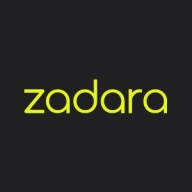

Amazon S3 Glacier and Zadara are both cloud storage solutions catering to different business needs. Zadara seems to have an upper hand in terms of flexibility and customer service, while Amazon S3 Glacier is noted for its security and cost-effectiveness.
Features: Amazon S3 Glacier is praised for its security and data durability, ensuring long-term data integrity. Zadara offers hybrid storage options, customizable configurations, and a more comprehensive feature set, making it more adaptable to various business needs.
Room for Improvement: Amazon S3 Glacier can improve with faster data retrieval times, enhanced customer support, and more intuitive management tools. Zadara users suggest better documentation, more intuitive management tools, and enhancements in customer support.
Ease of Deployment and Customer Service: Amazon S3 Glacier is known for its simplicity and ease of setup, though the support can be slow. Zadara has a more complex deployment process but receives higher ratings for responsive and knowledgeable customer service.
Pricing and ROI: Amazon S3 Glacier receives positive feedback for its low-cost storage solutions, making it a cost-effective choice for data archiving. Zadara is perceived as more expensive but delivers better ROI through its versatile and scalable storage options.
If AWS improves support and cost management, there would be fewer reasons for users to consider other cloud platforms.
As it is Amazon S3 Glacier, it is used only for archival purposes, so it is comparatively okay to use it, and we can save money compared to the standard which is high.
The cost is not cheaper compared to AWS, and we have not seen the expected return on investment.
There is room for improvement in providing more skilled and comprehensive solutions.
If it is a business plan, then the support we have is really good.
They provide documentation and resolve issues.
I rate the technical support from Zadara as nine out of ten.
We lack adequate response times and a 24/7 service level agreement.
Amazon S3 Glacier is infinitely scalable, with no issues on our end.
Glacier has excellent scalability, with elasticity and security that meet industry standards.
Amazon S3 Glacier auto-scales according to the data.
Zadara is a fully-fledged platform, and our customers are happy with its use.
We have not experienced any glitches or bugs.
I do not experience any stability issues.
I would rate the stability of Glacier for archival purposes at around eight out of ten.
Support could be more robust, with a focus on providing comprehensive solutions even for novel issues.
Another improvement is making Glacier available in all regions.
I would like to see improvements in the transfer rate as it takes quite a long time to retrieve data from Glacier compared to standard S3 storage.
Maintenance can also be complicated, especially when deeper troubleshooting requires navigating the CLI and searching for logs.
Adding AI capabilities could enhance the offering as well.
Compared to competitors like GCP, AWS can work on reducing hidden costs and overall pricing to retain startups and medium-sized businesses.
The storage cost is minimal, which is beneficial for archival purposes.
Amazon S3 Glacier is beneficial due to its lower cost.
The pricing is considered expensive.
The security features include object lock encryption and immutability options, so we can use this for backups.
Glacier greatly helps in managing storage costs by moving historical data to a lower-cost storage option.
The value of Amazon S3 Glacier for us is the lower cost.
The most valuable feature is its storage management capability.
Zadara's troubleshooting feature is very valuable for me.
| Product | Market Share (%) |
|---|---|
| Amazon S3 Glacier | 13.8% |
| Zadara | 1.6% |
| Other | 84.6% |


| Company Size | Count |
|---|---|
| Small Business | 25 |
| Midsize Enterprise | 6 |
| Large Enterprise | 14 |
| Company Size | Count |
|---|---|
| Small Business | 12 |
| Large Enterprise | 3 |
Amazon Glacier is a secure, durable, and extremely low-cost cloud storage service for data archiving and long-term backup. Customers can reliably store large or small amounts of data for as little as $0.007 per gigabyte per month, a significant savings compared to on-premises solutions. To keep costs low, Amazon Glacier is optimized for infrequently accessed data where a retrieval time of several hours is suitable.
Zadara is a powerful enterprise-level storage solution whose design enables it to handle every aspect of a user’s data storage needs. It can be deployed in any location, using any protocol, and storing any data type that an organization requires. With Zadara, organizations can do everything that they were able to do with more traditional systems in a cheaper and more efficient way.
Zadara Benefits
Some of the ways that organizations can benefit by choosing to deploy Zadara include:
Zadara Features
File analytics. Organizations can leverage a powerful analytics package that can provide them with critical insights. These tools can help users sort through their data and make more informed data management decisions.
Reviews from Real Users
Zadara is a highly effective solution that stands out when compared to many of its competitors. Two major advantages it offers are its extensive suite of cloud solution integrations and its object storage capability.
Steve H., the chief technology officer at Pratum, writes, “One of the most valuable features is its integration with other cloud solutions. We have a presence within Amazon EC2 and we leverage computer instances there. Being able to integrate with computing, both locally within Zadara, as well as with other cloud vendors such as Amazon, is very helpful, while also being able to maintain extremely low latency between those connections.”
Mauro R., the CEO of Momit SRL, says, “The object storage feature is wonderful. With traditional storage, you have a cost per gigabyte that is extremely high or related to the number of disks. With Zadara Storage Cloud, you have a cost per gigabyte that you can cut and tailor to your needs independent of the number or size of the disks.”
We monitor all Public Cloud Storage Services reviews to prevent fraudulent reviews and keep review quality high. We do not post reviews by company employees or direct competitors. We validate each review for authenticity via cross-reference with LinkedIn, and personal follow-up with the reviewer when necessary.